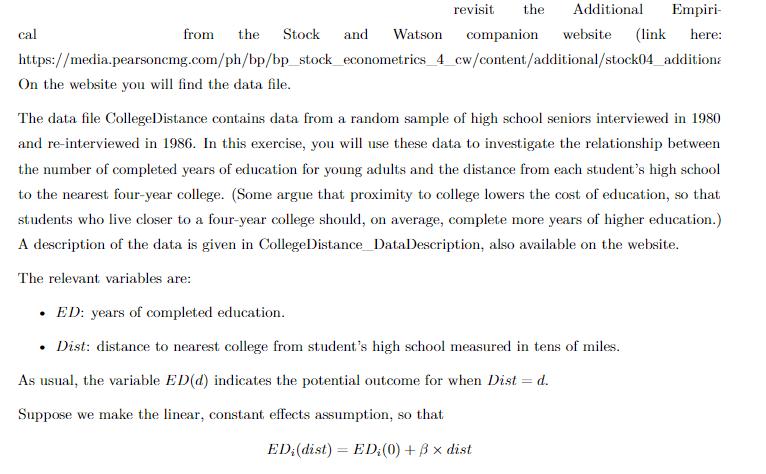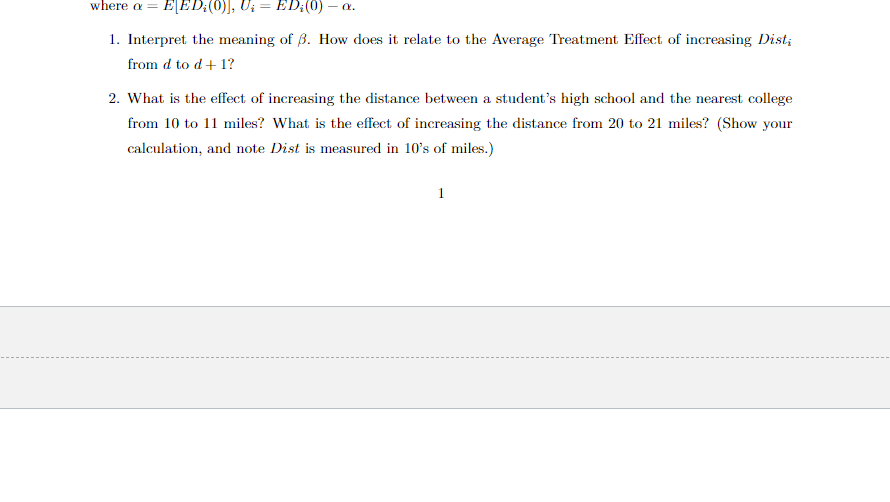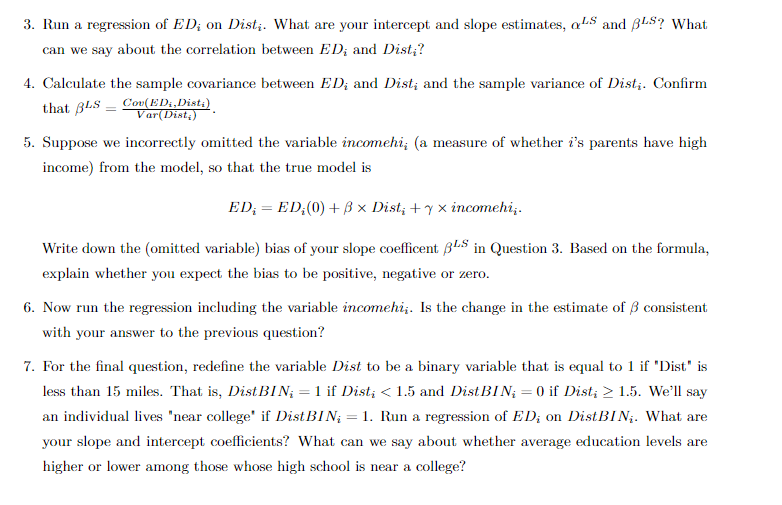Answered step by step
Verified Expert Solution
Question
1 Approved Answer
cal from the Stock and revisit the Additional Empiri- Watson companion website (link here: https://media.pearsoncmg.com/ph/bp/bp_stock_econometrics_4_cw/content/additional/stock04_additiona On the website you will find the data file.



cal from the Stock and revisit the Additional Empiri- Watson companion website (link here: https://media.pearsoncmg.com/ph/bp/bp_stock_econometrics_4_cw/content/additional/stock04_additiona On the website you will find the data file. The data file CollegeDistance contains data from a random sample of high school seniors interviewed in 1980 and re-interviewed in 1986. In this exercise, you will use these data to investigate the relationship between the number of completed years of education for young adults and the distance from each student's high school to the nearest four-year college. (Some argue that proximity to college lowers the cost of education, so that students who live closer to a four-year college should, on average, complete more years of higher education.) A description of the data is given in CollegeDistance DataDescription, also available on the website. The relevant variables are: ED: years of completed education. Dist: distance to nearest college from student's high school measured in tens of miles. As usual, the variable ED(d) indicates the potential outcome for when Dist = d. Suppose we make the linear, constant effects assumption, so that ED (dist) ED(0) +x dist where a = E[ED;(0)], U = ED;(0) - a. 1. Interpret the meaning of . How does it relate to the Average Treatment Effect of increasing Dist; from d to d+1? 2. What is the effect of increasing the distance between a student's high school and the nearest college from 10 to 11 miles? What is the effect of increasing the distance from 20 to 21 miles? (Show your calculation, and note Dist is measured in 10's of miles.) 1 3. Run a regression of ED; on Dist. What are your intercept and slope estimates, LS and BLS? What can we say about the correlation between ED; and Dist;? 4. Calculate the sample covariance between ED; and Dist; and the sample variance of Dist. Confirm that BLS Cov(ED,Dists) Var(Dist) 5. Suppose we incorrectly omitted the variable incomehi; (a measure of whether i's parents have high income) from the model, so that the true model is ED; = ED;(0) + x Dist; + x incomehi.. Write down the (omitted variable) bias of your slope coefficent BLS in Question 3. Based on the formula, explain whether you expect the bias to be positive, negative or zero. 6. Now run the regression including the variable incomehi. Is the change in the estimate of consistent with your answer to the previous question? 7. For the final question, redefine the variable Dist to be a binary variable that is equal to 1 if "Dist" is less than 15 miles. That is, DistBIN; = 1 if Dist; < 1.5 and Dist BIN; = 0 if Dist; > 1.5. We'll say an individual lives "near college' if DistBIN; = 1. Run a regression of ED; on DistBIN. What are your slope and intercept coefficients? What can we say about whether average education levels are higher or lower among those whose high school is near a college?
Step by Step Solution
There are 3 Steps involved in it
Step: 1

Get Instant Access to Expert-Tailored Solutions
See step-by-step solutions with expert insights and AI powered tools for academic success
Step: 2

Step: 3

Ace Your Homework with AI
Get the answers you need in no time with our AI-driven, step-by-step assistance
Get Started


